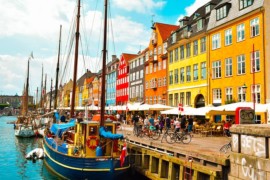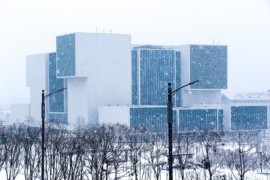
Thinking of a career in heating networks? Efficient, effective and environmentally responsible, heating networks are constantly developing right across Europe. Paradoxically, the industry is still struggling to recruit on certain trades. Is district heating a real career opportunity?
District heating, a booming sector
In France, there are, according to the latest national survey, 501 heating networks (17 and cooling networks). With a total length of 3883 km and a total capacity of 16,553 MW, in 2013 they delivered over 25,800 GWh! Heating networks are installed everywhere in France, with a greater concentration in Île-de-France (region that hosts the largest district heating in the country) and Rhône-Alpes (where two major heat networks located in Grenoble, the second largest heating network in France and Lyon-Villeurbanne).
Rural areas are not left out: there are many smaller networks. France is no exception in this respect: in Europe it is common to see more than half of the heat distributed via district heating networks; in the only city of Copenhagen, Denmark, this is even more than 90%. In Iceland, geothermal energy can satisfy 95% of heating needs!
If heating networks are experiencing significant growth in France and the rest of the continent, it is because the district heating has been recognized by the European Union as a way to fight against global warming. Their development has been integrated into the recent Act on the energy transition. One purpose of this law: to achieve 23% of renewable energy by 2020 and 32% in 2030! In France, they are also encouraged by the Fund heat, the amount was doubled recently to reach in 2017 some 420 million euros. For example, the heating network Centre-Loire to Nantes should eventually become the third largest in France, with 80 km of pipeline planned for 2020.
It must be said that heat networks are not without advantages:
– An important control of energy costs;
– The possibility of developing more energy;
– Lower air emissions, very significant in comparison with a set of housing manager “only” their supply of heat and hot water;
– Action to provide for the preservation of the environment …
A career in the heating networks, what is it?
Today, the heat network sector consists of a set of very different trades, but complementary. in particular are:
– The unit or operations managers, manager in charge of teams of technicians;
– Network technicians responsible for the proper operation and maintenance of facilities;
– Fitters, heating engineers, who work on boiler facilities;
– Project managers, to meet customer consultations;
– Design engineers, who perform technical studies or installations of diagnostics;
– Heating installers;
– Sales engineers, whose mission is to develop the client portfolio …
All these specific trades HVAC sector (HVAC, HVAC English) course are joined by “cross” trades, for example in accounting. Heating networks today mobilize professionals from all areas of expertise!
Recruitment difficulties
Some heating network operators are struggling to find the skills they need for their production sites. This is especially true, according to a study by the General Commission for Sustainable Development, regarding maintenance technicians and other technical professions. Why ? Perhaps because the possibilities offered by this sector are still not sufficiently known by the general public. That could change over time: between the law on the energy transition, the doubling of funds warmth and connection of many buildings in a district heating network, more and more courses are offered in the area. Accompanied by electronic skills, focused on saving energy and the absolute need to reduce emissions of greenhouse gases, these “green” training lead to many trades in heating networks. A credible option, then!
And you, do you think the General Commission for Sustainable Development in the heating networks sector is a great career opportunity? Talk about it in the comments! To avoid missing out on all the latest news and developments in heating networks, subscribe to our newsletter.







